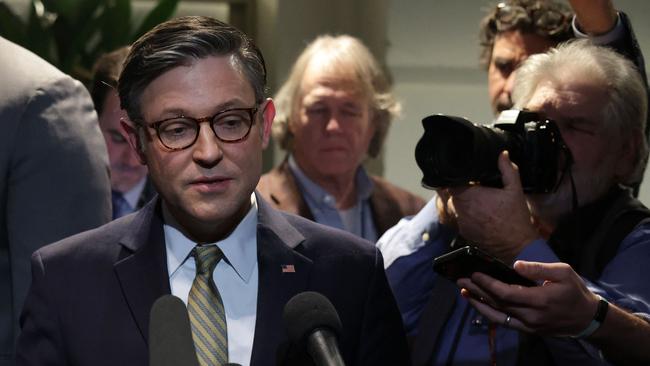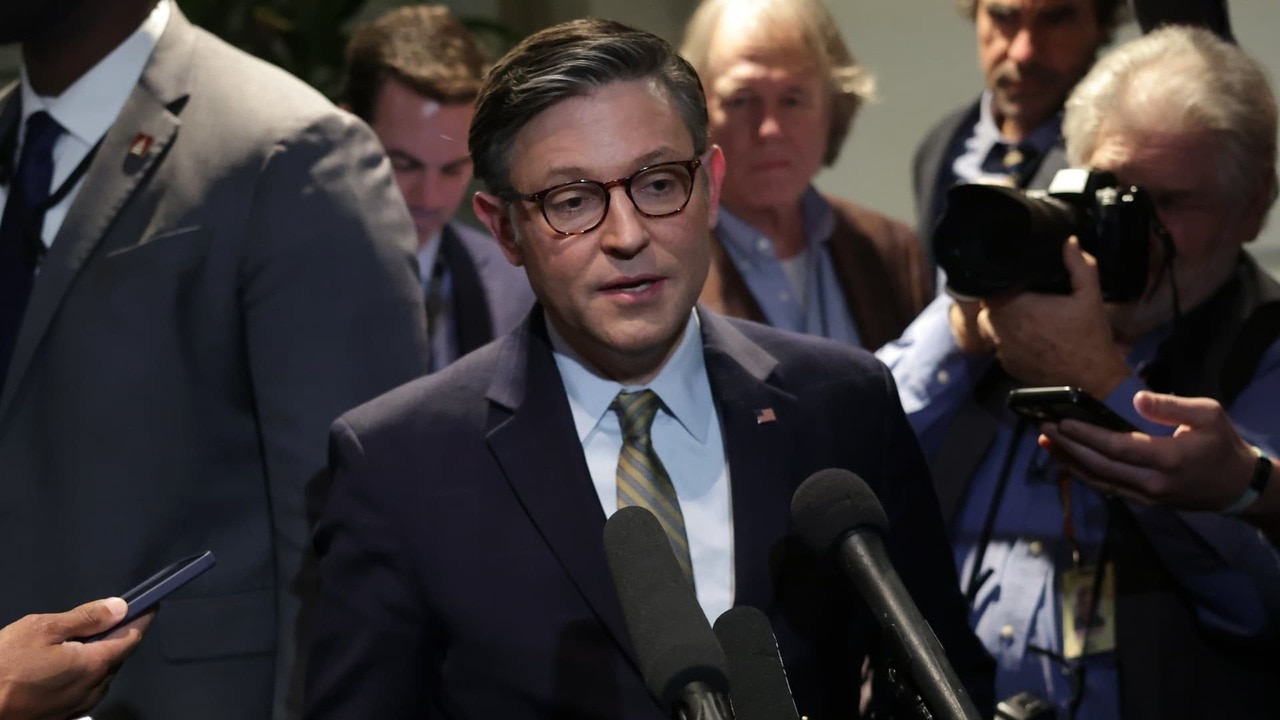US congress approves revised plan to avert government shutdown
The Senate followed the US House in voting to extend federal funding into March and provide disaster aid, but leave out the debt ceiling increase demanded by Donald Trump.

Both houses of the US congress have averted a government shutdown after weeks of negotiations that went down to the wire, after the Senate early on Saturday rubber-stamped a bill passed earlier by the House of Representatives to fund federal agencies through to mid-March.
With the midnight deadline already expired by more than half an hour, senators fast-tracked the package to a vote, halting shutdown preparations and saving Christmas for more than 800,000 workers at risk of being sent home without pay.
The legislation also needs to be signed into law by President Joe Biden, expected soon.
In the Democrat-run Senate, the vote was 85-11. While the bill wasn’t signed into law by the midnight funding deadline, the government typically doesn’t shut down if the funding lapse is on a clear path to being resolved.
The Republican-led House had approved revised legislation to avert a government shutdown and provide more than $US100 billion in disaster and farm aid, sending the measure to the Senate just hours ahead of the midnight deadline.
House lawmakers voted 366 to 34 to approve the proposal, well above the two-thirds threshold needed under special fast-track procedures. One lawmaker voted present.
GOP lawmakers pledged to raise the debt ceiling and cut spending next year, but not vote on it now. President-elect Donald Trump had demanded in recent days that lawmakers vote to raise the borrowing cap before he takes office.
“There is a unanimous agreement in the room that we need to move forward,” Mr Johnson said Friday afternoon after a meeting with House Republicans. “We will not have a government shutdown,” he said.
The bill, which was House Speaker Mike Johnson’s third attempt this week, drew significant Democratic support, despite continued anger that an earlier, bipartisan agreement was killed. Lawmakers voted 366 to 34 to approve the proposal, well above the two-thirds threshold needed under special fast-track procedures. One lawmaker voted present.
The proposal approved on Friday would extend government funding until March 14, while also providing more $US100 billion in disaster relief and $10 billion in economic aid for farmers. The bill also includes a one-year extension of the farm bill, the cornerstone of US food and agriculture policy.

House Republicans were forced to formulate the new approach after a bipartisan plan released Tuesday was torpedoed by Mr Trump and his billionaire ally Elon Musk, and a slimmed-down measure backed by Mr Trump was defeated resoundingly in a floor vote Thursday night.
The bill approved on Friday strips out a series of other provisions that were included in the bipartisan deal that Mr Trump shot down, such as restrictions on investments in China.
The original 1,547 pages of the bipartisan text was slimmed down to 116 pages for Thursday’s vote, and grew slightly to 118 pages on Friday.
The last-minute scramble highlighted the problems Republicans have had for two years in unifying behind bills funding the federal government. Democrats expressed their exasperation and said the responsibility for clearing up the mess lies with their GOP colleagues.
“Instead of disaster funding, they’ve given us a disaster,” said Rep. Lloyd Doggett (D., Texas).
White House press secretary Karine Jean-Pierre put the blame firmly on Mr Johnson on Friday.
“This is a mess that Speaker Johnson created. This is his mess to fix.” She said Mr Biden had been in touch with Democratic leaders on the Hill.
If no bill was close to being signed into law by President Biden by 12.01am Saturday, the federal government would have been partially shut down, furloughing hundreds of thousands of federal workers, though critical services would continue to function. A partial shutdown of a few hours or weekend days would likely have little tangible impact on the functioning of the federal government.
Federal employees are given backpay for work they did or missed during a shutdown, though that may not be relevant if the shutdown is confined to a weekend when many workers are at home, anyway.
The most recent government shutdown, in late 2018 and early 2019, lasted 35 days, and centred on a clash between Mr Trump and Democrats over whether to fund a border wall.
In this week’s negotiations, Mr Trump had sought a provision suspending the nation’s borrowing limit until January 2027. But Republicans instead punted the debt limit question to next year.
Republican leaders on Friday floated a $US1.5 trillion debt limit increase along with $2.5 trillion in cuts in mandatory spending programs — such as Medicaid, Medicare and food stamps — as part of party-line bills they’re trying to pass next year. Trump has promised to protect Medicare and Social Security, and the latter program can’t be cut through that party-line process known as budget reconciliation.
When the US is running nearly $2 trillion annual deficits, a $1.5 trillion debt limit increase doesn’t last very long, probably not even until the 2026 midterm election. And spending cuts on that scale could be difficult to get through the narrow House majority. On the flip side, if there are enough House Republicans who insist on spending cuts, that could endanger the tax-cut extension Republicans have promised.
“Trump wanted $5 trillion,” said Rep. Ralph Norman (R., S.C.), one of 38 Republicans who rejected a temporary spending bill with a two-year debt-limit suspension on Thursday. “We just weren’t going to go with that.”
Lawmakers typically either extend the debt ceiling by a dollar amount or until a future date on the calendar.
The GOP struggles this week raised doubts about the future for Mr Johnson, who until this week had been seen as a shoo-in to be elected speaker when the new House votes on January 3. Now, several GOP lawmakers are indicating they would oppose him, given his handling of the stopgap bill.
Republicans have struggled for the past two years to pass major funding bills, with party leaders heavily dependent on Democratic votes. The GOP majority in the House currently stands at 219 to 211. In the wake of the November election, the Republicans will likely have a 219-215 margin on the first day of the new Congress.
— Richard Rubin, Catherine Lucey and Vivian Salama contributed to this article.
The Wall Street Journal



To join the conversation, please log in. Don't have an account? Register
Join the conversation, you are commenting as Logout